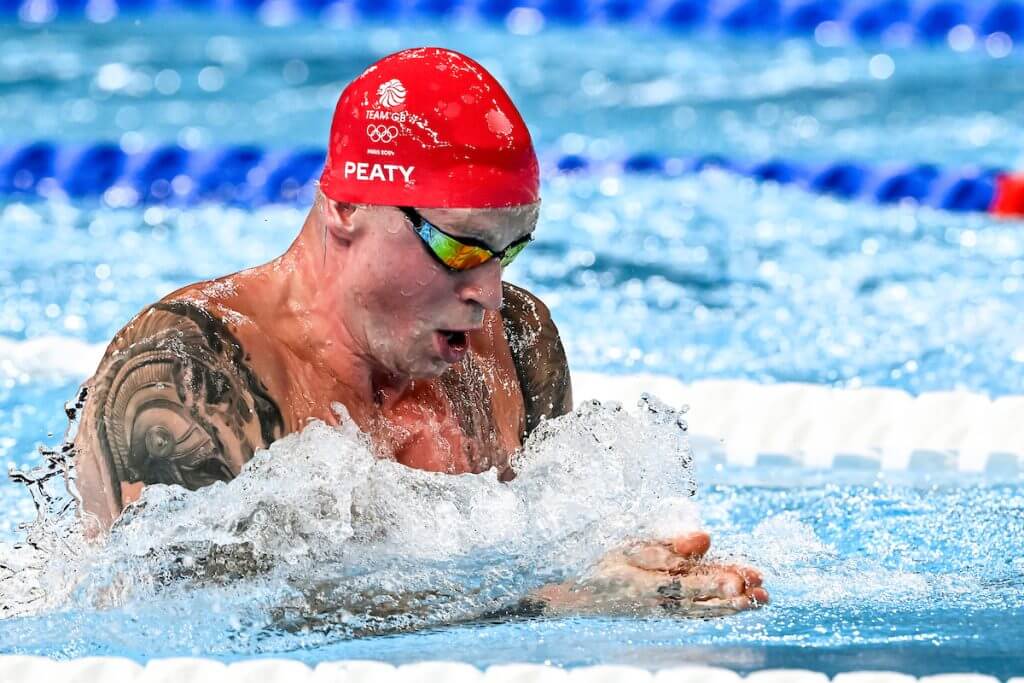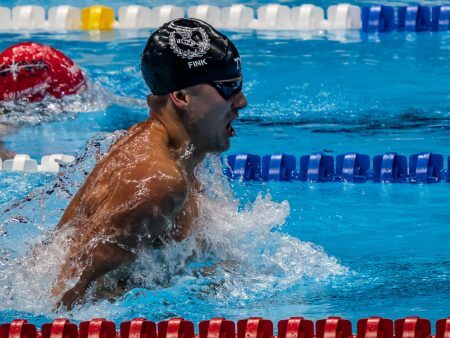How Swimmers Attack the 100 Breaststroke: Breaking Down Different Approaches to a Varied Race

How To Swim the 100 Breaststroke: Breaking Down Swimming’s Most Perplexing Race
What makes a great 100 breaststroker? Many would point to a dominant kick, gliding them through the water. Others would point to a strong stroke, using their upper body to push forward with efficiency. Some might even point to great underwater work that accelerates a swimmer past the competition. All of these factors are generally agreed upon as key to breaststroke success. Through the variety of different techniques used while swimming, the stroke is fascinating.
But how do some of the best athletes in the world swim the race? Analyzing that can provide a better understanding of how the world’s best handle what can be a perplexing stroke.
Peaty Mania
It would be impossible to write an article about the 100 breaststroke without writing about its fastest performer and perhaps most influential swimmer, Adam Peaty. The British star changed the race forever in 2015 when he became the first man to go under 58 seconds. But it wasn’t the record that shifted swimming but how Peaty swam the event. The swimmer took a stroke about every eight tenths, by far the fastest stroke rate for any top competitor in the race. The quick stroke rate has shifted sprint breaststroke swimming, with many of Peaty’s rivals duplicating his speedy stroke rate.
Essential to this stroke is Peaty’s core strength. The swimmer’s ability to lift himself over the surface of the water as far as he does while keeping a consistent bodyline shows his uncanny athleticism. Pulling higher allows Peaty to pull more water, and he uses his exceptional strength to shoot his hands forward every stroke.
Perhaps the most underrated part of his stroke is his quick, narrow kick consistent with the tempo of his stroke rate. That allows Peaty to maximize efficiency.
With Peaty’s dominance of sprint breaststroke over the past decade, it was natural for his style to become popular. In fact, for the first time in eight years, Peaty’s stroke rate was actually outmatched by two swimmers in this year’s Olympic final; Germany’s Lucas Mazareth and Italy’s Nicolo Martineghi, the swimmer who touched out Peaty for Olympic gold in Paris. The swimmer’s body line has also been replicated, with swimmers like Martinenghi and Tokyo silver medalist Arno Kamminga dominating with similarly high body lines.
Finking Differently

Nic Fink — Photo Courtesy: Peter H. Bick
Peaty’s strategy has proved an effective one, but it represents just one way to swim the race. This past summer, American Nic Fink tied Peaty for Olympic silver while utilizing a drastically different style of stroke. Fink took 40 strokes, three less than Peaty, but his stroke and kick both looked drastically different than the Brit’s rapid-fire nature.
Rather than looking to lift himself far over the surface of the water like Peaty, Fink kept himself relatively low across the surface. Fink’s stroke generates less power than Peaty’s during the opening 50 meters but becomes easier to hold as the lap goes on. Fink sacrifices force for longevity, leading to a massive comeback over the back half.
Another major difference between the two swimmers’ form can be seen in the kicks. While Peaty’s narrow kick works for his quick, forceful pull, Fink employs a much wider kick, fitting in line with his much narrower pull. The kick makes up for some of the power lost in Fink’s pull, springing the swimmer forward by taking the time to generate force.
Many swimmers across the world swim a similar style to Fink as well, prioritizing the kick in their stroke. This stroke allows for a wider variety of success across breaststroke events, with swimmers like Fink and China’s Qin Haiyang swimming the 200 breaststroke as well. While creating less power, the stroke still creates a formula for success through its efficiency and durability.
Long and Strong
Remarkably quick stroke rates are common among elite 100 breaststrokers, in large part due to Peaty’s impact. But many swimmers still utilize a much longer stroke, creating power in a different way. One of these is the Netherlands’ Caspar Corbeau, who competes in both the 100 and 200 breast and won Olympic bronze in the 200-meter race in Paris. In the 100-meter final, Corbeau’s 36 total strokes were by far the fewest strokes of any swimmer in the field. But the swimmer’s power stemmed from one place unique from the other swimmers: his glide.
Corbeau’s incredible body line stands out among the field, allowing him to glide more than his competitors. The swimmer’s tight streamline and strong squeeze of his kick drive him through the water, holding his bodyline in a more hydrodynamic manner than most of his competitors, allowing him to match Peaty’s power and Fink’s strength.
Corbeau’s style is rather uncommon, especially in an era of quick breaststroke stroke rates. But the swimmer’s efficiency makes the stroke a worthwhile pursuit, especially for those looking for an alternative to Peaty or Fink’s technique. With strong mechanics and patience, Corbeau’s formula can absolutely be a successful one.
With many different methods to swim the 100, it’s easy to believe one formula to be superior. However, the answer seems to lie in two factors: a swimmer’s physical makeup and strengths and their personal preference. For example, a smaller, less power-based swimmer versatile in both the 100 and 200 might try a stroke similar to Fink, whereas a swimmer with strong mechanics might try Corbeau’s style to glide through the water. Opportunities for many different types of swimmers to succeed exist, making it the most unique race in swimming.




Im swimming my first 100m br and 200mbr this season and i was so worried! thank you so much! (its also my first ever 200m br)